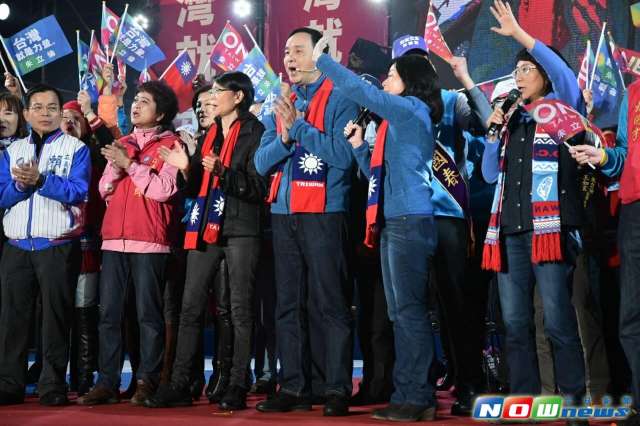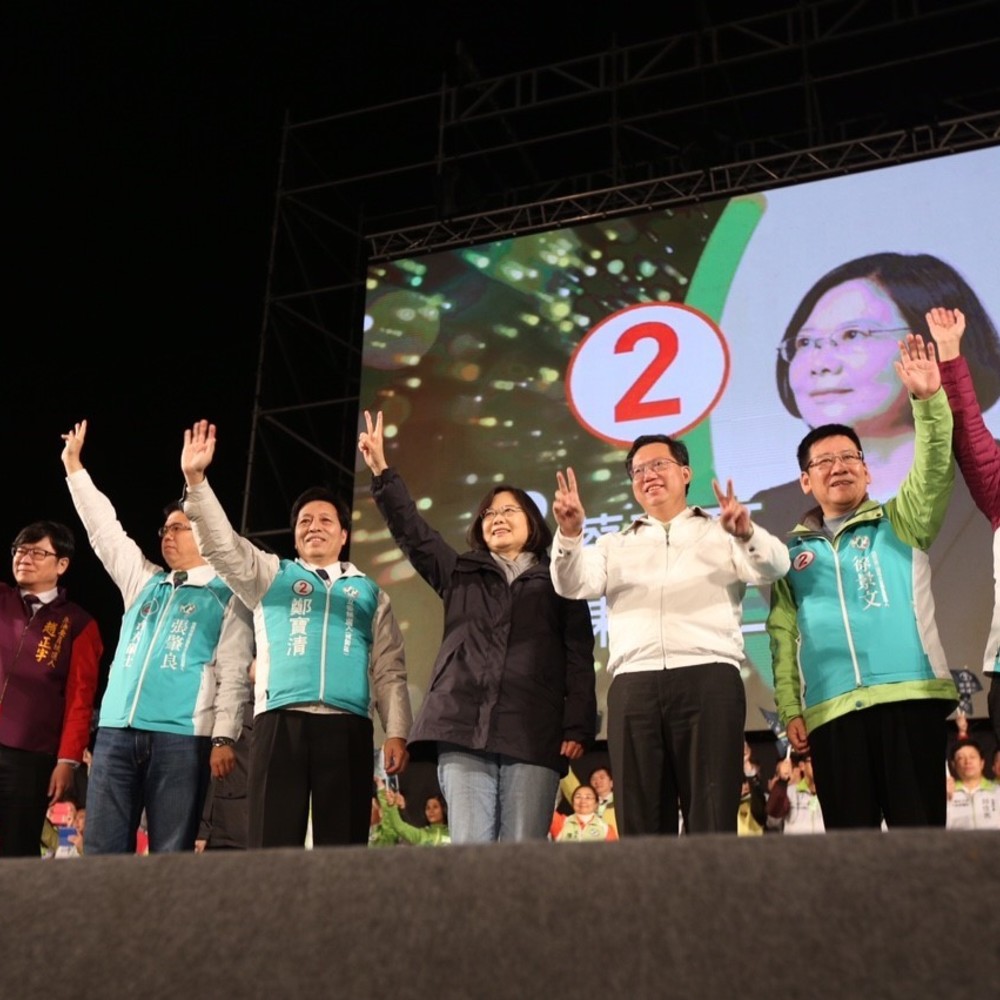by Brian Hioe
語言:
English
Photo Credit: Taiwan People News
WHEN WE LOOK back on 2016 elections, will we find that it in the end it was just a choice between Pepsi and Coca-Cola, between two brands, in choosing between the KMT and DPP? Today, on the day of elections, we might think deeply on this fact.
Tsai Ing-Wen and Eric Chu’s cross-strait and economic policies are notably similar. Even if it is that Tsai Ing-Wen will be coast into office on the basis of dissatisfaction with KMT policies that draw Taiwan too close to China for comfort for the majority of Taiwanese under the Ma Ying-Jeou administration, Tsai Ing-Wen’s policies actually also include signing trade deals with China and entering China-led trade pacts. These are largely the same policies pushed for by Eric Chu.
Tsai’s economic policy includes the aspect of a “New Southward Policy” which stresses the importance of building economic ties with Southeast Asian countries, but otherwise her economic policies of pushing for Taiwan’s entrance to the TPP, RCEP, and signing FTAs with Europe are identical to those of Chu. Tsai and Chu both also call for the signing of the Cross-Strait Agreement Monitoring Act and, even if the DPP views the 1992 Consensus as a fiction concocted by past KMT administrations, the DPP will not truly seek to challenge the 1992 Consensus. Instead, the DPP would probably seek to ensure the continuation of the 1992 Consensus in some form by rebranding it in DPP, rather than KMT terms, but preserving the fundamental substance of the 1992 Consensus.
The DPP hopes to come into power by coasting on a wave of calls for reform in all sectors of government. But actually, despite the historical opposition of the KMT to most progressive changes in Taiwan, the KMT also calls for reforms in this election. The demand for reforms in Taiwanese government have reached such levels that even the KMT must at least pay lip service to these demands. We see this with similar reform measures called for by the KMT in everything from reform of the prison systems, calls for raising wages, reform of the education system, and reforms of government itself in the legislature, executive, and judicial. However, just as a KMT administration would likely never live up to such promises, it is another question altogether as to whether a DPP administration would live up to its promises either.
 Chu at his campaign rally yesterday. Photo credit: NowNews
Chu at his campaign rally yesterday. Photo credit: NowNews
So what, then, are the differences between Tsai and Chu? It is certainly true that Tsai will not as bald-facedly sell out Taiwan to China as a KMT president might, as she lacks the deep-rooted crony capitalist ties to Taiwanese corporations in as wide-reaching a manner as a KMT candidate would, given the history of Taiwan’s developmentalist state under KMT rule.
But Tsai, despite being a DPP candidate ultimately also is beholden to business interests just as a KMT candidate would. Indeed, because part of the presidential mandate under which voters will put Tsai into office is on the basis of a demand to revive economic growth in Taiwan, this renders Tsai particularly susceptible to backsliding in favor of business interests if it seems like it may boost growth. Notably, Tsai’s plan for revitalizing Taiwan’s economy also does not substantially differ from Chu’s, with focuses on developing Taiwan’s tech industry and encouraging innovation by young entrepreneurs which strike as largely platitudes coming from both parties.
Is it on the basis of better branding than the KMT, then, that Tsai will come into office? Tsai’s campaign has been running on the basis of calling for progressive social change, including support for same-sex marriage, and policies aimed at inclusiveness of recent immigrants and indigenous peoples. To be sure, Tsai’s show of progressivism seems better than the increasingly stark reactionarism of the KMT, as we see in the recent behavior of the KMT and the resurgence of its radical right wing. And it is that if the elephant in the room is the question of preserving Taiwan’s de facto independence against Chinese encroachment, Tsai will still be less unabashed in selling out Taiwan to China.
Yet this aside, is it that progressive social policies serves to disguise an overall pro-corporate agenda, which at the end of the day which would still involve signing risky trade deals with China? If so, the choice between KMT and DPP would merely be between a more direct form of exploitation and a more well-disguised one. Indeed, part of the dissatisfaction of the Taiwanese public with DPP rule after the Chen Shui-Bian era was that the DPP became entrenched in local interest networks after taking presidential power. If it is not popular to criticize Tsai Ing-Wen herself because of her clean personal image, one need remember the past history of the DPP selling out the welfare of the people of Taiwan to corporate business interests, for example, in cooperating with construction companies to conduct evictions of urban residents in order that valuable real estate can be commercially redeveloped for future sale. Certainly, the DPP may not be so guilty as the KMT where selling out the people of Taiwan is concerned, but will this be the same in the future?
 Tsai Ing-Wen at her campaign rally yesterday. Photo credit: Tsai Ing-Wen campaign
Tsai Ing-Wen at her campaign rally yesterday. Photo credit: Tsai Ing-Wen campaign
For the sake of progressive politics in Taiwan, it will be that Taiwanese need to learn to think beyond the binary of the KMT and DPP and learn that both parties are symptomatic of the failing of the broader political system. Outside of presidential elections, we find that in wake of the Sunflower Movement and the defeat of the KMT in nine-in-one elections last year, a number of new parties entered the political scene. The candidates of such parties are drawn from Taiwanese civil society. These parties constitute the so-called “Third Force,” the third political force in Taiwanese politics outside of the KMT and DPP.
However, despite vowing to challenge the divisions of the two-party system between the KMT and DPP, the Third Force never sought to directly challenge the DPP. Even in cases when Third Force parties vowed to avoid cooperation with the DPP, in the end, the Third Force compromised in working with the DPP in order to get their foot into the door of the legislature. Will the Third Force turn on the DPP after using present cooperation with the DPP to enter legislature? That is what remains to be seen. Although it is equally possible that the Third Force has just been co-opted by the DPP at this point beyond salvation, this may be too early to say.
Yet the failure to emerge of any alternative to the KMT and DPP is a result of political divisions which have not been surmounted in Taiwan. Ultimately, this should be the takeaway of Taiwanese going into elections. Namely, it is that the power of the KMT and DPP remain too great for there to be any viable challenges to either party in the present. And even if the KMT is certainly much more historically criminal than the DPP, if it is that both parties are merely two varieties of the same, Taiwanese will need to deeply reflect on how to break out of the system of two party dominance in Taiwan in future election cycles in both presidential or legislative elections.


 Chu at his campaign rally yesterday. Photo credit: NowNews
Chu at his campaign rally yesterday. Photo credit: NowNews Tsai Ing-Wen at her campaign rally yesterday. Photo credit: Tsai Ing-Wen campaign
Tsai Ing-Wen at her campaign rally yesterday. Photo credit: Tsai Ing-Wen campaign